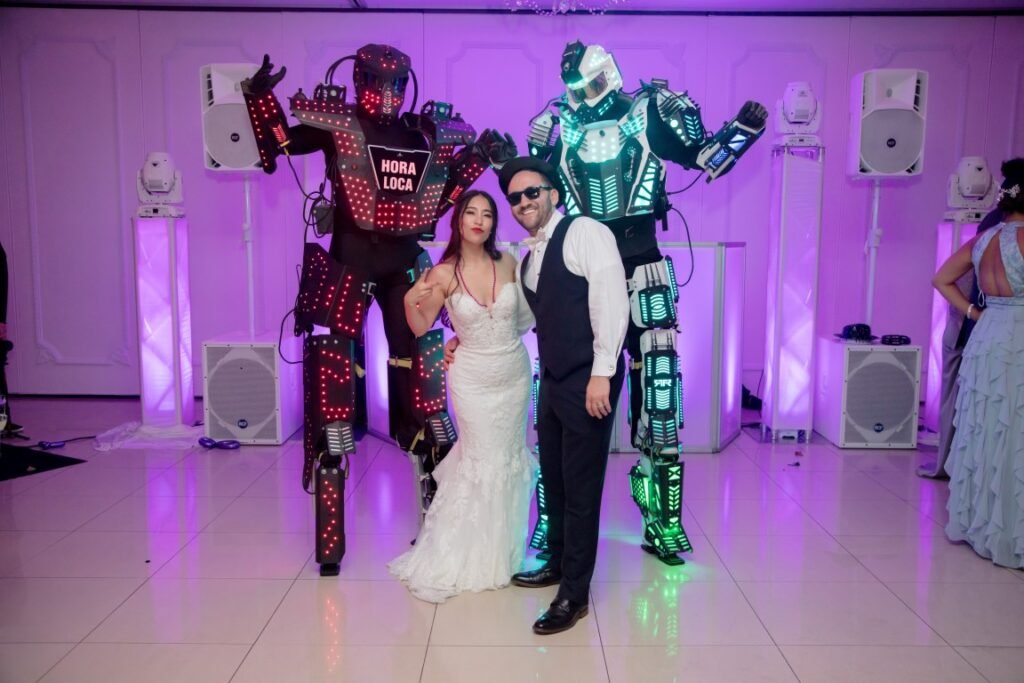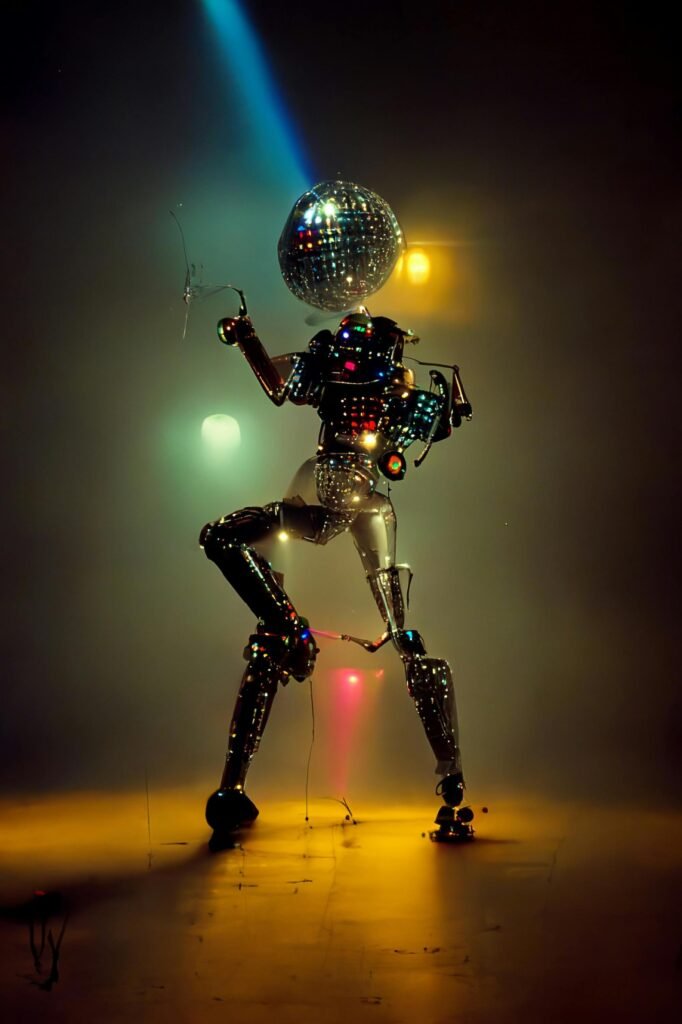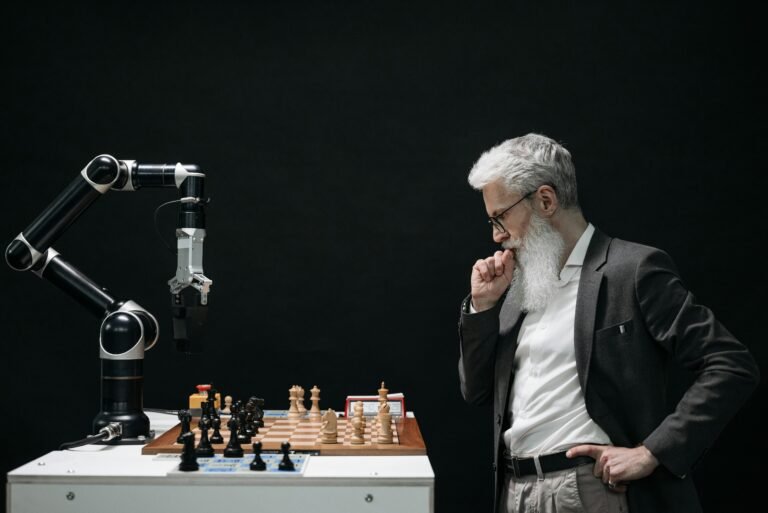Introduction
In the vast world of dance, few moves have captured the imagination quite like the dance. This iconic style, characterized by rigid, mechanical movements, has been a staple of pop culture for decades. From street corners to quinceañeras, the robot has found its way into various celebrations and performances. But where did this unique dance come from, and how has it evolved over time? Let’s dive into the captivating history of the dance and explore its journey from mime acts to mainstream stardom.
The Mechanical Roots: Pantomime and Mime
The dance didn’t simply appear out of thin air. Its origins can be traced back to the early 20th century, where the seeds of mechanical movement were first planted in the world of pantomime and mime.

Charlie Chaplin: The Mechanical Tramp
One of the earliest influences on what would become the dance was none other than the legendary Charlie Chaplin. His famous “Little Tramp” character often incorporated jerky, mechanical movements that mimicked the increasingly automated world around him.
Key Chaplin performances with robotic elements:
- “Modern Times” (1936): Chaplin’s character struggles with assembly line machinery
- “The Circus” (1928): The Tramp imitates an automaton in a funhouse
These performances, while not strictly dance, laid the groundwork for the idea of humans moving like machines – a concept that would prove crucial to the development of the robot dance.
Marcel Marceau’s “Bip the Robot”
Fast forward to the 1950s, and we find another key figure in the prehistory of the dance: French mime artist Marcel Marceau. Marceau’s character “Bip” had a routine called “Bip the Robot” that showcased remarkably precise, mechanical movements.
“To communicate through silence is a link between the thoughts of man.” – Marcel Marceau
Marceau’s influence extended beyond the stage. His techniques for creating the illusion of mechanical movement would later be adopted and adapted by dancers developing the style.
The Birth of Locking and Popping
While mime artists were perfecting mechanical movements on stage, a revolution was brewing on the streets of California in the 1960s and 1970s. This revolution would give birth to two styles that would heavily influence the dance: locking and popping.
Don Campbell and the Creation of Locking
In 1969, Don Campbell accidentally created a dance move that would change the course of street dance history. The “lock” – a sudden freezing of movement – became the foundation of a new style called locking.
Key elements of locking:
- Quick, distinct arm and hand movements
- Freezes or “locks” in certain positions
- Pointing gestures and split-second poses
While not directly robotic, locking’s staccato movements and freezes would later influence the development of the robot dance.
Boogaloo Sam and the Development of Popping
Around the same time, Sam Solomon (known as Boogaloo Sam) was developing another style called popping in Fresno, California. Popping involved quickly contracting and relaxing muscles to create a jerking effect in the body.
Popping techniques:
- Hitting: A quick, sharp contraction of muscles
- Ticking: Rapid, rhythmic muscle contractions
- Waving: Creating the illusion of a wave passing through the body
These popping techniques, especially ticking, would become essential components of the robot dance as it evolved.

The Robot Dance Takes Shape
With the groundwork laid by mime artists and the innovations of street dancers, the stage was set for the emergence of the dance as we know it today.
Charles Washington: The Mechanical Man
In the late 1960s, a dancer named Charles Washington began performing a style he called the “Mechanical Man” in nightclubs around Los Angeles. Washington’s dance combined elements of mime with the emerging street dance styles, creating a performance that truly looked robotic.
Charles Washington’s contributions:
- Developed a full-body robotic style
- Incorporated mime techniques into street dance
- Performed regularly at the Stroller’s Club in Los Angeles
Washington’s performances caught the eye of many, including future members of the Electric Boogaloos, who would go on to refine and popularize popping and robotic styles.
Science Fiction and Popular Culture
The robot dance didn’t develop in a vacuum. The 1960s and 1970s saw a surge in science fiction popularity, with androids featuring prominently in films, TV shows, and books.
Influential sci-fi works:
- “The Twilight Zone” (1959-1964)
- “2001: A Space Odyssey” (1968)
- “Westworld” (1973)
These cultural touchstones provided inspiration for dancers looking to emulate mechanical movements, as well as creating a receptive audience for-style dance performances.
Robert Shields and Lorene Yarnell
Another key duo in the development of the dance was Robert Shields and Lorene Yarnell. This mime team gained popularity in the 1970s with their robotic dance routines, which they performed on television variety shows.
Shields and Yarnell’s impact:
- Brought robotic dance movements to a national television audience
- Combined mime techniques with more contemporary dance styles
- Inspired future dancers to incorporate robotic elements into their performances
Their act, while more theatrical than street dance styles, helped to popularize the aesthetic of humans moving like.
Soul Train and Mainstream Exposure
As these various influences were coalescing into what we now recognize as the dance, a television show would play a crucial role in bringing these styles to a national audience: Soul Train.
Don Campbell Introduces Locking
In 1971, Don Campbell and his dance group The Lockers appeared on Soul Train, introducing locking to a wide audience. While not strictly robotic, the precise, stop-start nature of locking paved the way for the dance to follow.
Charles Robot and the Robot Dance
In 1973, a dancer known as Charles “Robot” Washington (not to be confused with Charles “Mechanical Man”) performed the dance on Soul Train, marking one of the first major television appearances of the style.
Impact of Soul Train appearances:
- Exposed millions of viewers to new dance styles
- Provided a platform for dancers to showcase their innovations
- Inspired viewers at home to try these new dance moves
Soul Train’s influence cannot be overstated. It turned street dance styles into national phenomena and helped establish them as a recognized dance move.

Michael Jackson and the “Dancing Machine”
No discussion of the dance would be complete without mentioning Michael Jackson. In 1974, The Jackson 5 performed their hit song “Dancing Machine” on Soul Train, with Michael incorporating robotic movements into the choreography.
Michael Jackson’s robot technique:
- Precise, staccato arm movements
- Smooth transitions between rigid poses
- Integration of robotic elements with more fluid dance styles
Jackson’s performance was a sensation, and he would continue to refine and incorporate robotic movements throughout his career. His influence brought the robot dance to an even wider audience and inspired countless imitators.
“I would always watch Soul Train, and I knew every dance step. That’s where I first saw the robot.” – Michael Jackson
Evolution and Variations
As the dance gained popularity, it began to evolve and merge with other dance styles, creating new variations and techniques.
Breakdancing and the Robot
In the 1980s, as breakdancing exploded onto the scene, many b-boys incorporated robotic movements into their routines. The precision and control required for the complemented the technical skills valued in breaking.
Robot elements in breakdancing:
- Incorporating robotic movements into toprock sequences
- Using robotic freezes as power moves
- Transitioning between fluid and mechanical movements
Electric Boogaloos and Ticking
The Electric Boogaloos, a dance crew formed by Boogaloo Sam, further developed the popping style, including a technique called ticking. Ticking involved rapid, rhythmic muscle contractions that created a highly mechanical effect.
Ticking technique:
- Isolating specific body parts for rapid contractions
- Creating a strobe-like visual effect
- Combining with other popping techniques for complex routines
Ticking became an essential component of advanced dance performances, allowing dancers to create incredibly precise, machine-like movements.
Modern Interpretations
Today, the dance continues to evolve, with dancers finding new ways to incorporate robotic movements into contemporary styles.
Modern robot dance variations:
- Tutting: Geometric arm and hand movements
- Animation: Creating the illusion of stop-motion animation
- Robotting: A style focused entirely on robotic movement
These modern styles showcase the enduring appeal of the dance and its ability to adapt to changing dance trends.
Cultural Impact and Legacy
The dance has left an indelible mark on popular culture, extending far beyond the dance floor.
Music Videos and Popular Entertainment
From the 1980s onward, robotic dance moves have been a staple of music videos across various genres. Artists like Styx, Herbie Hancock, and Daft Punk have all incorporated robot dancing into their visual performances.
Advertising and Commercials
The distinctive and eye-catching nature of the dance has made it a popular choice for advertisers looking to grab attention. Numerous commercials have featured dancing to sell products ranging from electronics to snack foods.
Integration into Contemporary Dance
Professional choreographers and dance companies have also embraced robotic movements, incorporating them into contemporary dance pieces. This fusion of styles has led to innovative performances that challenge the boundaries between human and machine movement.
Notable Performers and Innovators
Throughout its history, the dance has been shaped by talented performers who have pushed the boundaries of what’s possible with mechanical movement.
| Performer | Contribution |
| Jeffrey Daniel | Popularized the backslide (later known as the moonwalk) |
| Popin’ Pete | Developed advanced popping and ticking techniques |
| Mr. Wiggles | Innovated in popping and electric boogaloo styles |
| Steffan “Mr. Robot” Clemente | Specializes in advanced robot dance techniques |
These dancers, among many others, have contributed to the rich tapestry of styles and techniques that make up the dance today.
The Robot Dance in Celebrations
The dance’s popularity has seen it incorporated into various celebrations and events. For example, it’s not uncommon to see dancing at a quinceañera, the traditional coming-of-age celebration for girls in many Latin American cultures. The fun, expressive nature of the makes it a hit with younger dancers, while its nostalgic appeal resonates with older guests.
dance at celebrations:
- Quinceañeras
- Wedding receptions
- School dances
- Birthday parties
The versatility allows it to fit into both choreographed routines and spontaneous dance circles, making it a staple of celebratory events.
Conclusion:
From its roots in pantomime to its evolution through street dance and pop culture, the dance has come a long way. It stands as a testament to human creativity, our fascination with technology, and our ability to turn mechanical movements into art.
As we look to the future, it’s clear that the dance will continue to evolve and inspire. Whether it’s at a quinceañera, in a music video, or on a competitive dance stage, the robot remains a captivating and influential part of dance history.
The next time you’re at a party and someone breaks out the, remember—you’re not just seeing a dance move; you’re witnessing a piece of cultural history that spans decades and continues to captivate audiences around the world.
boost your business with the help of guest posting contact now (contact form link)
